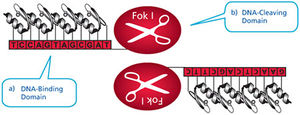Making page: Difference between revisions
(→Genome) |
|||
| Line 30: | Line 30: | ||
==Genome== | ==Genome== | ||
Immune system resistance comes from its established virulence factors. One crucial virulence factor is T3SS and Yersinia outer proteins. Both target phagocytosis cells and inhibit cell signaling pathways altering functions of phagocytosis and gene expression | |||
<br>Include some current research in each topic, with at least one figure showing data.<br> | <br>Include some current research in each topic, with at least one figure showing data.<br> | ||
Revision as of 17:02, 15 April 2022
Yersinia Pestis in Fleas
Introduction
Yersinia Pestis (also known as the Black Death) is a gram-negative coccobacillus that is transmitted by rodent fleas to animal hosts including humans. The bacterium is highly contagious, and humans can be infected by handling an infected animal, getting bitten by an infected rodent flea, or inhaling an aerosol from an infected animal or human (1).
To observe this bacterium, you can use a Wayson or Giemsa stain as well as Gram stain under light microscopy (1). In Wayson staining, Y. pestis appears as light blue bacilli with dark blue polar bodies. You can also use direct fluorescent antibody testing for observations of the bacteria. Identification of Y. pestis can be made by conducting a polymerase chain reaction assay (1).
There are three types of widespread plaques that Yersinia Pestis can cause: Pneumonic, bubonic, and septicemic. In the U.S. bubonic is the most common. Incubation period for bubonic plague is typically longer than for pneumonic plaque. Pneumonic starts as flulike illness but quickly progresses to high fever, chest pain, cough, dyspnea, and hemoptysis. Shock also often occurs, and white blood cell count is significantly elevated. In later stages pf the disease, disseminated intravascular coagulation can occur. Chest radiographs can be used in pneumonic plaque to reveal bilateral lower lobe alveolar opacities. Septicemic mostly involves patients showing signs of septic shock (1).
At right is a sample image insertion. It works for any image uploaded anywhere to MicrobeWiki. The insertion code consists of:
Double brackets: [[
Filename: PHIL_1181_lores.jpg
Thumbnail status: |thumb|
Pixel size: |300px|
Placement on page: |right|
Legend/credit: Electron micrograph of the Ebola Zaire virus. This was the first photo ever taken of the virus, on 10/13/1976. By Dr. F.A. Murphy, now at U.C. Davis, then at the CDC.
Closed double brackets: ]]
Other examples:
Bold
Italic
Subscript: H2O
Superscript: Fe3+
Genome
Immune system resistance comes from its established virulence factors. One crucial virulence factor is T3SS and Yersinia outer proteins. Both target phagocytosis cells and inhibit cell signaling pathways altering functions of phagocytosis and gene expression
Include some current research in each topic, with at least one figure showing data.
Life Cycle
Include some current research in each topic, with at least one figure showing data.
Use in Bioterrorism
Include some current research in each topic, with at least one figure showing data.
Conclusion
Overall paper length should be 3,000 words, with at least 3 figures.
References
Edited by student of Joan Slonczewski for BIOL 238 Microbiology, 2009, Kenyon College.

